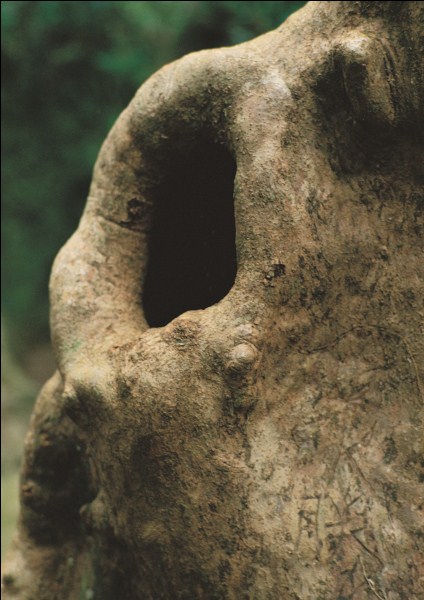Hi Everyone,
This weeks meditation article focuses on the Zen meditation on the body within the body. The first part of the meditation, separating our actual body from our conceptual image of our body is a traditional Zen technique. The second part, dropping the body and resting in the pure awareness body is my own addition that I use when I teach the meditation to classes. So it is my own “invention” so to speak, but it is entirely within the spirit and intention of Zen practice.
Yours in the spirit of clear perception,
Toby

Article of the Week:
Zen Meditation on the Body Within the Body (Within the Body)
Our Three Bodies and the Three Dimensions of Existence Highlighted By Zen
All the great wisdom traditions of the world point out that our world is a multi-dimensional one, with these different dimensions coming together in communion to form the totality of our being and experience.
In the Zen meditation on the body within the body, three of these dimensions are emphasized as objects of meditation, each of these bodies in turn corresponding to a particular dimension of reality.
The Three bodies are:
- Our conceptual body, or the conceptual image that we hold in our mind of our physical body
- Our actual physical body as it is in the sensory world
- Our formless energy body or body of consciousness
These three bodies in turn correspond to three fundamental dimensions of our reality and moment to moment experience:
- The conceptual or intellectual dimension of our existence
- The non-conceptual dimension of our existence
- The spiritual or formless dimension of our existence that forms the ground or basis of dimensions one and two.
The meditation is called the body within the body, because our non-conceptual body is concealed or hidden by our conceptual body, or body image, and our body of consciousness is hidden behind the sensory perception of our non-conceptual body. Hence through meditation we discover different bodies behind or within what we thought was just one body.
The Purpose of the Meditation on the Body Within the Body
The purpose of this meditation is to help us develop awareness of what in Buddhism is called dualistic appearance, which is the appearance of an object (such as our physical body) together with the projected mental image of that object (in this case the body). According to the Buddha, all of our suffering and pain arises from the confusion that dualistic appearance creates in our mind.
To take a simple example, an anorexic person with a very skinny body observes his/her body and projects the mental image an unacceptably fat body on their actual body. As a result they continue to starve their physical body even though it desperately needs nutrients. In such a person their idea of their body and their actual body are completely confused, and so as a result they cause themselves suffering and harm.
The above example is an extreme one, but in reality all of us experience this type of confusion more or less all of the time, our idea of reality and the actuality of our reality do not match each other and so as a result we experience confusion, delusion and suffering.
The first point of the meditation on the body within the body takes our physical body (initially) as its object, and shows us how we can become mindful of the difference between our actual body our conceptual image of our body so that we no longer confuse the two in harmful ways.
The second point of the meditation is to cultivate the skill of dropping all appearances, conceptual and non-conceptual, and learning to rest our mind in the natural, open state of pure awareness that is our body of consciousness.
The Meditation
Stage 1: Meditating of the conceptual image of your body
Sitting comfortably in meditation, start to examine times in your life when you have had different experiences of your body, times when you may have hated it, times when you have been proud of it, ashamed of it, embarrassed by it. Try to observe how in each case the way in which you experience your body at those times is actually in large part dominated by a conceptual image of the body, rather than the body itself as you are experiencing it from moment to moment. Try and observe how your conceptual mind projects its imagined image of a body onto your body.
Stage 2: Meditating on the non-conceptual experience of your body
In the second stage of the meditation simply focus on the sensory experience of your body and breathing as they are in the present moment. Using the body and the breathing as an anchor, try and drop all conceptual thoughts as completely as you can, and just experience the physical body as it is, free from your idea of what it is. Try and become as familiar as you can with this non-conceptual experience of your sensory body as you experience it in the here and now.
This experience of the body as it is is called “the body within the body” because it is the body that we “discover” when we drop our conceptual image of our body. Our mental image of our body normally hides our actual body from us (!)
Stage 3: Meditating on your body of consciousness
In the final stage of the meditation simply try and let go of all conceptual and sensory experiences altogether, and allow your mind to rest in the “pure awareness body” or subtle formless energy body that acts as the ground from which arises both our conceptual and sensory experience. Try and gently sustain your experience of this formless or “spiritual” dimension of existence for the remainder of the meditation.
This third meditation stage and third “body” is called “the body within the body, within the body” because it is the body that is normally hidden behind the mask of the phenomenal world, or the body of form. When we drop our body of form, the body of consciousness appears, or is revealed.
Practice When Going About Our Daily Life
- During your daily life try and remain consciously aware of the different images and perceptions that your mind is projecting upon your body, accept the images that are useful and helpful, but do not buy into images that are destructive, deluded or unhelpful. Be mindful not to be fooled by them!
- Try and come back to your basic sensory or non conceptual experience of your body by regularly dropping your conceptual thoughts and focusing for short periods on the sensory body and the breathing.
- Regard both your conceptual and non-conceptual worlds as appearances arising from the ground of your (Universal) or body of consciousness, like a dream arising from the clarity of deep sleep, or clouds arising within and clear sky.
© Toby Ouvry 2012, you are welcome to use or share this article, but please cite Toby as the source and include reference to his website www.tobyouvry.com
 The salt analogy is this; if you put a teaspoon in a cup of water, stir it in and then taste it, it tastes horrible. However, if you take a bucket of water, stir a teaspoon full of salt into it and then take a sip of it, it will still taste basically ok.
The salt analogy is this; if you put a teaspoon in a cup of water, stir it in and then taste it, it tastes horrible. However, if you take a bucket of water, stir a teaspoon full of salt into it and then take a sip of it, it will still taste basically ok.






 Meditation Workshop: An Introduction to Meditation From the Perspective of Tibetan Buddhism
Meditation Workshop: An Introduction to Meditation From the Perspective of Tibetan Buddhism Six Aspects of Sacred Sexuality
Six Aspects of Sacred Sexuality